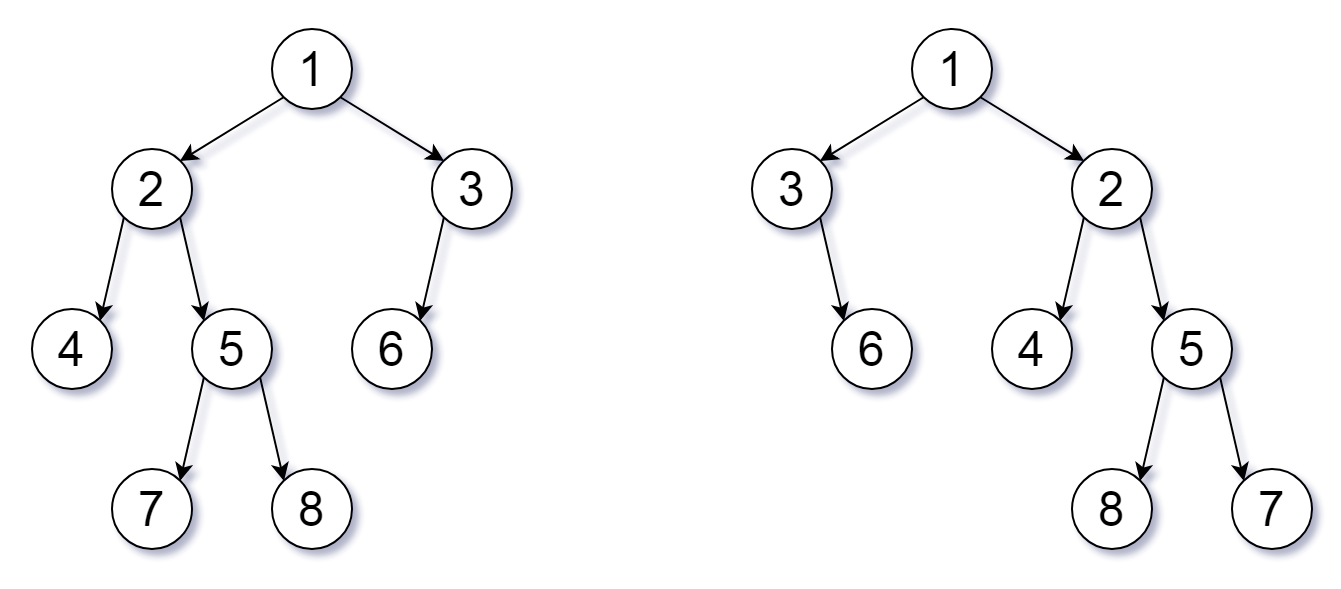Description
For a binary tree T, we can define a flip operation as follows: choose any node, and swap the left and right child subtrees.
A binary tree X is flip equivalent to a binary tree Y if and only if we can make X equal to Y after some number of flip operations.
Write a function that determines whether two binary trees are flip equivalent. The trees are given by root nodes root1 and root2.
我们可以为二叉树 T 定义一个翻转操作,如下所示:选择任意节点,然后交换它的左子树和右子树。
只要经过一定次数的翻转操作后,能使 X 等于 Y,我们就称二叉树 X 翻转等价于二叉树 Y。
编写一个判断两个二叉树是否是翻转等价的函数。这些树由根节点 root1 和 root2 给出。
题目链接:https://leetcode.com/problems/flip-equivalent-binary-trees/
Difficulty: medium
Example 1:
Input: root1 = [1,2,3,4,5,6,null,null,null,7,8], root2 = [1,3,2,null,6,4,5,null,null,null,null,8,7]
Output: true
Explanation: We flipped at nodes with values 1, 3, and 5.

Note:
- Each tree will have at most 100 nodes.
- Each value in each tree will be a unique integer in the range [0, 99].
分析
- 递归对比检测每个节点,每次递归过程分为如下三种可能:
- 1:当前节点都为None,返回True;2:当前节点都不为None,此时若两个节点的值不相等,返回False,反之,递归到下一层,比较左右子结点,分为两种情况(左节点对左节点,右节点对右节点或者左节点对右节点,右节点对左节点),一种情况为True,就返回True;3:也就是一个为None,一个不为None,返回False。
- 递归实现过程如下。
参考代码
Definition for a binary tree node.
class TreeNode:
def __init__(self, x):
self.val = x
self.left = None
self.right = None
class Solution:
def flipEquiv(self, root1, root2):
if(root1==None and root2==None):
return True
elif(root1!=None and root2!=None):
if(root1.val!=root2.val):
return False
else:
return (self.flipEquiv(root1.left,root2.left) and self.flipEquiv(root1.right,root2.right)) or (self.flipEquiv(root1.left,root2.right) and self.flipEquiv(root1.right,root2.left))
else:
return False